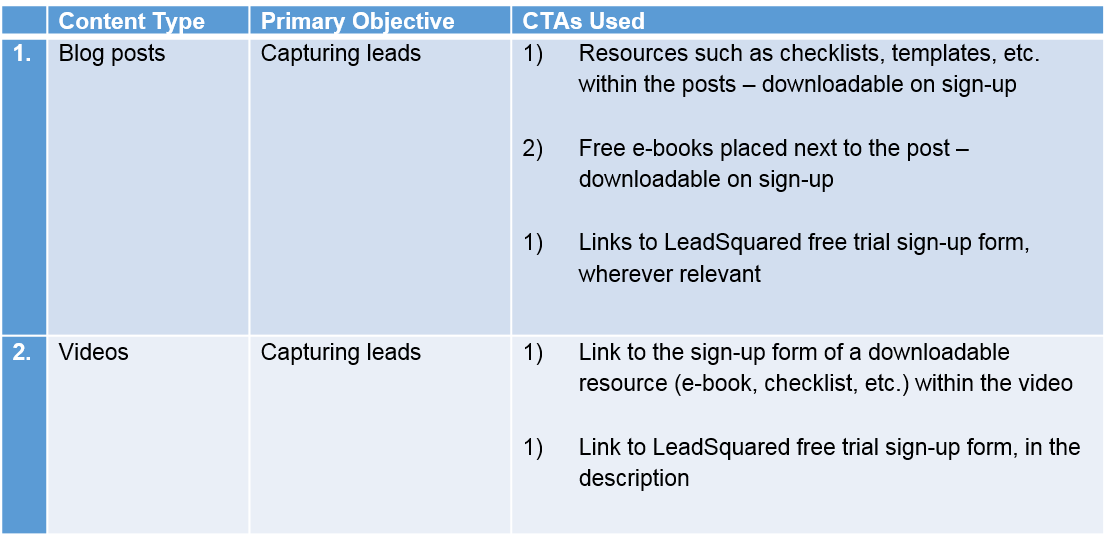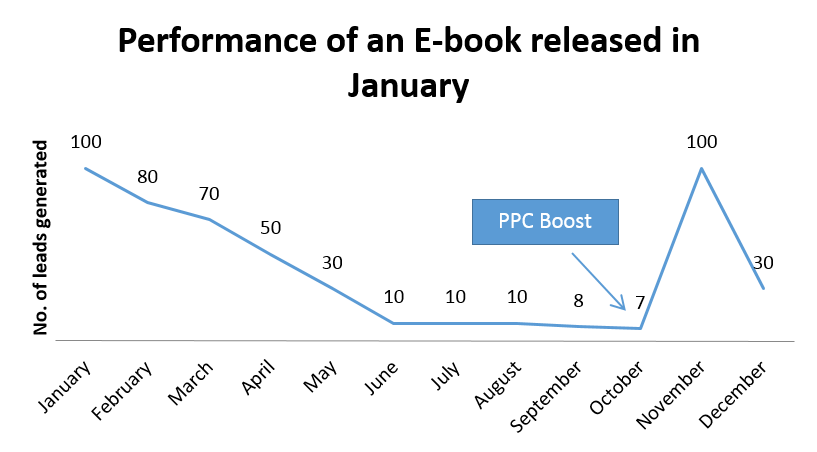
‘Content marketing is the way forward.’
You probably hear that promising statement at every other discussion about business. What is left unsaid, however, is that this ‘way forward’ is a tricky, uncertain one.
Yes, it takes a whole lot of patience and hard-work to reap results from your content marketing efforts.
Download your content promotion cheatsheet!
More importantly, even when the results do show up – it’s no mean feat to measure them!
While the time and the toil cannot be helped, I have a neat, simple process, using which you can measure your content marketing ROI (return on investment). Here goes :-
Step 1 : Define revenue-based objectives
Content marketing can serve a spectrum of purposes – increasing brand visibility, ranking in search engines, directing traffic to your website, capturing more leads, engaging with your customers, etc.
However, all of these should tie back to one overarching business goal – making money for the company.
This is why, instead of relying on broad, vague ‘purposes’ as discussed above, you need to define monetarily measurable objectives for all of your content marketing efforts, such as ‘more leads’, ‘more customers’, ‘more revenue’, etc.
For example, a business that creates blogs and videos to generate leads and customers online (such as a coaching institute, a real estate developer, or a B2B software company like us), can assign the following objectives to their content –

Step 2 : Use appropriate CTAs with each unit of content
If you’re keen on measuring the impact of your content, you need to place strong CTAs (calls-to-action) within or around each unit of content that you create.
This is because the number of ‘actions’ taken based on your calls-to-action is what you will use to measure the ‘returns’ from that piece of content.
For example, we at LeadSquared use the following CTAs with our content :-

Step 3 : Calculate the content marketing ROI
In the final step, you need to :
Find the approximate life span of your content
Much of the content that businesses create is timeless in nature. Your content, once created and indexed, will continute to get you more leads (in most cases diminishingly, sometimes at a constant pace, and sometimes, it may become more relevant/popular in the future).
So, a graph for the performance of 1 e-book might look like this :-

However, for the sake of calculation, you need to study your traffic statistics to find the ‘approximate life span’ of the type of content in question. This means, the ROI we calculate will be a conservative figure, as it will not reflect the long-term value of the content created, but only the ‘current’ gains from it.
For example, our posts on the LeadSquared blog get most of their traffic within one month of being posted, after which the visits become fewer and random. So, we can assume that the life of each post on our blog = 1 month.
2. Calculate the cost of the content marketing effort
To calculate the total investment in the content marketing effort, use the following formula :-

Continuing with the example above, let’s say that a Content Specialist at LeadSquared wrote and promoted 20 posts from January to May. She used 90% of her time in this (blogging), while the rest of her time went in routine office work. Her salary is Rs. 40,000 per month. Now,
Fixed Cost (of blogging from January to May) = 90% of (40,000*5) = 1,80,000 Rs.
If she spent an additional 50,000 Rs on distribution,
Estimated Cost = 1,80,000 + 50,000 = 2,30,000 Rs.
3. Calculating the returns of the content marketing effort
First, calculate the Average Revenue Per Lead (ARPL), using the following formula :-

Now, if you use a lead management system like LeadSquared, you will be able to track the ‘source’ or the origin of your leads. So, find the total number of leads you captured through the content marketing effort in question.
Then, calculate the Estimated Revenue, using the following formula :-

In the LeadSquared example above, we will assume that the returns for the blogging effort between January to May will materialize from February to June (as the lifespan of 1 post = 1 month). We will neglect January when counting the number of leads, because that month will have leads generated from the efforts in December 2015 as well, and it is always better to underestimate returns rather than overestimating them.
Assuming that our ARPL = 50 Rs, and the number of leads captured through blogging (in the months from February to June) = 6000,
Estimated Revenue = 6000*50 = 3,00,000 Rs.
4. Calculating the ROI
Finally, you can calculate your content marketing ROI using the formula :-

In the example above, the return will be 3,00,000 – 2,30,000 = 70,000 Rs, so the ROI will be (70,000/2,30,000)*100 = 30.43%.
Using the ROI, you will be able to get a clear picture of how much benefit your content is bringing to you, in revenue terms. Besides, you will be able to compare your content campaigns with your other marketing efforts (such as advertising, PR, physical events). All of this will help you make sure you put in your money where there is most reward!
This post was first published in the Economic Times.









